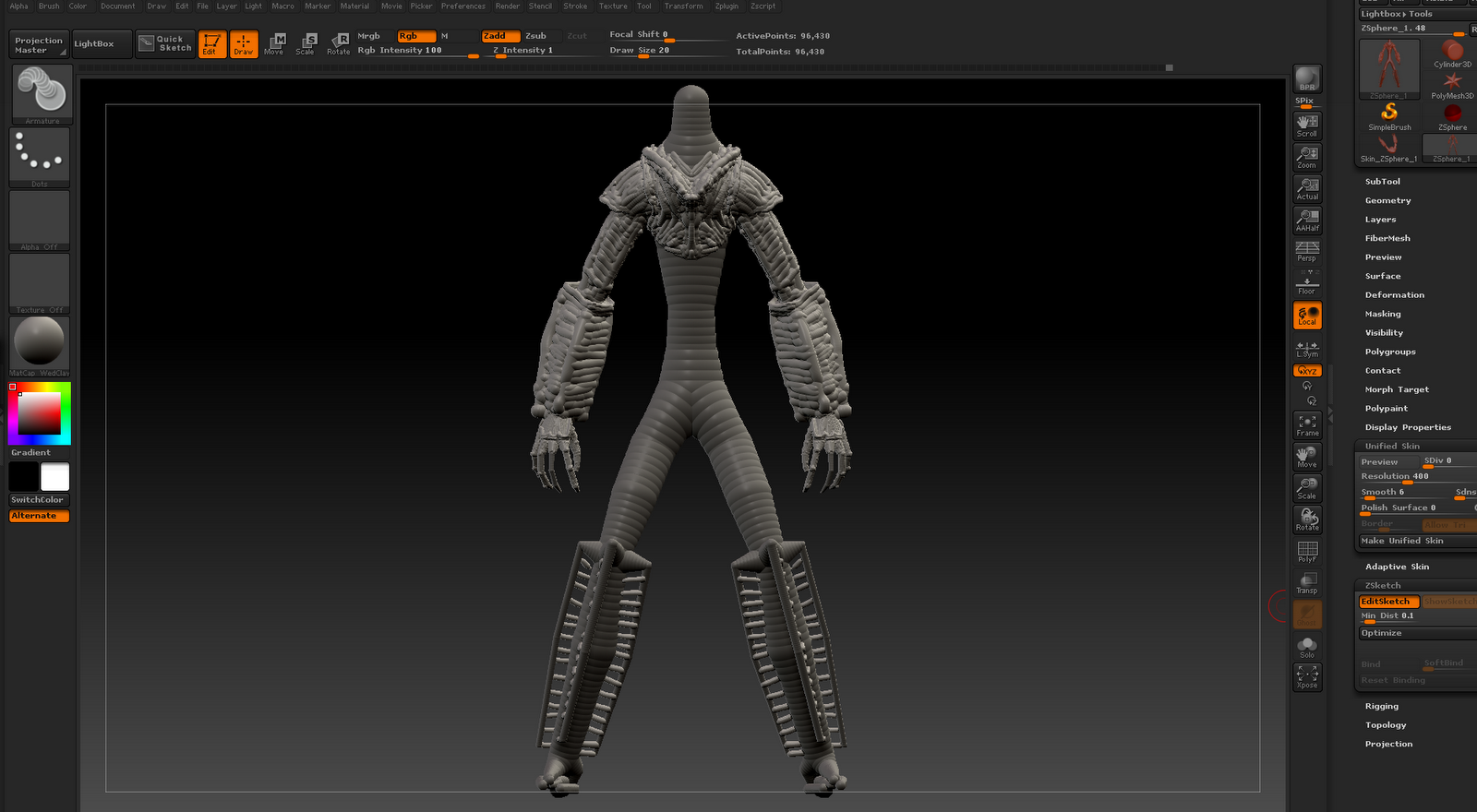
Personally what I do is import it into Max as-is, then apply the ProOptimizer modifier: You can use any decimation tool you like. Now we just need to decimate it and bring it back to Max. Play around with it, try to get the level of edge thickness you want.Īnd that's it for the highpoly. The further you drag it the stronger the effect will be. To actually apply the process, drag the slider out to some point along the bar. The Polish process has a toggle, activated by clicking on the icon to the right.

Now go down to the Decimation panel and have a look at the polish options. Once you regain control, the object has been remeshed. If you're unfamiliar with it, yes - the Zbrush UI is bizarre. To apply the Dynamesh, hold CTRL and click-drag on empty screen space. Several people have recommended it to me. Note - you can get a plugin, Dynamesh Master, that improves this process.
ZBRUSH HARD SURFACE TRIAL
You'll find out quickly if you picked too low, and it's easy to undo the Dynamesh process, so I suggest trial by error until you get a feel for what different objects need. Pick a resolution - what you need will depend on your object. OBJ.Ĭlick the Geometry tab, then the Dynamesh tab. Choose one of the default Dynamesh projects from the start screen.Ĭlick the Tool, then Import, and navigate to your. Once this is done, export the object as an. There's a few ways to do that, but I recommend that you add the Turn to Poly modifier, set Limit Polygon Size to 4, and enable Keep Polygons Convex. It's a good idea to quickly resolve the issue before sending to Zbrush. Probooleans have a lot of concave n-gons, and these can be mistriangulated on export or import. Once the mesh is fully defined as a Proboolean object we can send it to Zbrush to automate the highpoly process. Send the Proboolean object to Zbrush and Dynamesh it. That's easy to do because they remain live subobjects within the Proboolean. Later, when generating the lowpoly, we'll dial down these segment counts. This will produce better results in Zbrush. I often use 36 at minimum and 108 or 140 for extremely large cylinders. When using cylinders, use high segment counts.

One thing to note - keep your curves dense at this stage. Here's an example of a relatively complex object made from a large number of boolean operands:

Them, re-insert them, and edit them even while they're in theīy doing most of our modeling as Proboolean operations, revisions usually only affect a few operands, and don't require massive remodeling. Other words, the object itself is completely nondestructive.Ĭhange the order of the operands, change their operation type, remove These sub-meshes are referred to as "operands."Įvery operand within a Proboolean remains live and editable. You can also map this command to a hotkey or quad menu, which I recommend so that you don't have to flip through panels as much.Ī Proboolean is an object that contains a list of meshes that are combined, in order, using standard boolean operations. While the mesh is selected, click the button in the Create > Geometry > Compound Objects panel: Create meshes in 3ds Max as Proboolean objects.Īny mesh in 3ds Max can be converted to a Proboolean object. Special thanks to Robert Deleanu, Ethan Hiley, Pedro Amorim, and Hans Palm for providing many ideas and tips that went into this structure. I've been doing this for a couple weeks and received enough questions that it seemed worth writing down and sharing. Using this technique the artist can spend more time focusing on form design, less time on tedious operations relating to subdivision or optimization. This is a process for creating hardsurface game assets, automating the highpoly and lowpoly stages as much as possible.


 0 kommentar(er)
0 kommentar(er)
